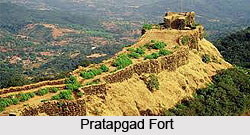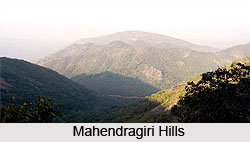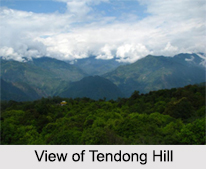 History of Mahabaleshwar defines the glorious ancient age, the natural beauties discovered by the English generals and the bloodsheds of medieval era. The first historical mention of Mahabaleshwar dates back to the year 1215 when King Singhan of Deogiri visited old Mahabaleshwar, which was at that time the temple town.
History of Mahabaleshwar defines the glorious ancient age, the natural beauties discovered by the English generals and the bloodsheds of medieval era. The first historical mention of Mahabaleshwar dates back to the year 1215 when King Singhan of Deogiri visited old Mahabaleshwar, which was at that time the temple town.
Formation of Mahabaleshwar
King Singhan of Deogiri built a small temple and water tank at the source of the Krishna River. It was around 1350 AD, a Brahmin dynasty ruled this area. In the middle of the 16th century the Maratha family of Chandarao More defeated the Brahmin dynasty and became rulers of Javli and Mahabaleshwar, during which period the temple of old Mahabaleshwar was rebuilt. In the 17th century Shivaji, took over Javli and Mahabaleshwar and constructed the Pratapgad fort in the year 1656.
Mahabaleshwar in Modern Era
In the year 1819, the British East India Company included the hills in the territory of the Raja of Satara. Colnel Lodwick stationed at Satara, in April 1824 with a contingent of soldiers and Indian guides climbed up the mountain face reaching what is now known as the Lodwick Point.
 In the year 1828, a succession of them from Sir Mountstuart Elphinstone, Arthur Malet, for whom the seat at "Point Arthur" is named, Carnac, Frere and many others became regular visitors.
In the year 1828, a succession of them from Sir Mountstuart Elphinstone, Arthur Malet, for whom the seat at "Point Arthur" is named, Carnac, Frere and many others became regular visitors.
Tourism in Mahabaleshwar
The Tourism In Mahabaleshwar came into existence in the year 1829-1830. In old records of British Government of India, it is mentioned as Malcolm Peth, but in practise today it is known as Mahabaleshwar. By the end of the 19th century, Mahabaleshwar had become an attractive popular hill station of world renown. Raj Bhavan, the summer residence of the Governor of Maharashtra, is also located here.
Babington House in Mahabaleshwar
Babington House is a magnificent colonial-style bungalow built in the shape of a cross with a deep balcony, elaborate metal work railing and extensive outhouses is considered Mahableshwar`s most beautiful country house. Babington House was formerly one of the principal country seats of the Dubash family, a Parsi ship chandler dynasty from Bombay Presidency who sold it to the Rahejas in the early 1970s. Babington House contains a central dining room with a 24-seater table and a lovely library pavilion with 1st edition books collected by the Dubash family, notably Jamsetjee "Jimmy" Kavasjee Dubash, a great bibliophile and art collector of that time.








